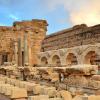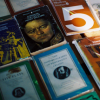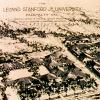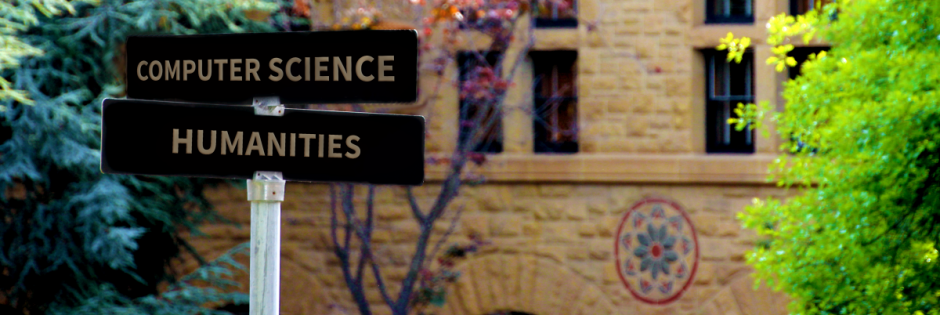About CS+X at Stanford
An experiment in learning, known informally as "CS+X", is aimed at integrating the humanities and computer science while providing students with unique educational experiences. Stanford will begin offering undergraduates the opportunity to pursue a new Joint Major in computer science and a number of humanities disciplines, starting in fall 2014. Our goal is to give Stanford students the chance to become a new type of engineer and a new type of humanist.
The potential strength of this new educational initiative can be judged by the fact that Stanford’s Computer Science department is jointly ranked as the nation’s strongest in the US News and World Report rankings and the university’s Arts and Humanities cluster is ranked as No.1 in the world in the 2013-2014 Times Higher Education World University Rankings.
Intersecting opposites create altered perspectives, fresh intellectual possibilities and new strengths. CS+X is an initiative designed to allow students to pursue their academic passions in multiple academic fields. It aims to help undergraduates balance pragmatism with ambition. And it affords them intellectual environments in which they can develop their creativity and analytic robustness by acquiring skills in separate but mutually galvanizing fields of study: engineering speaking to the imagination while literature, philosophy and language imbue technical challenges with human significance.
The new Joint Major degrees, which will lead to conferral of a B.A.S., are distinct from dual degrees or double majors. The keynote of the Joint Major is integrative learning. These programs are designed to allow a student to pursue a course of study leading to mastery in two fields by blending the vibrant intellectual traditions of two Stanford departments.
CS+X Joint Majors for 2015-16

Art Practice+CS
Faculty Contact: Camille Utterback
Staff Contact: Linda Esquivel

CS+Classics
Faculty Contact: Professor Giovanna Ceserani
Staff Contact: Lori Lynn Taniguchi

CS+Comparative Literature
Faculty Contact: Professor Adrian Daub
Staff Contact: Denise Winters
![]()
CS+English
Faculty Contact: Professor Gavin Jones
Staff Contact: Maile Yee
Learn More About CS+English on department site

CS+French
Faculty Contact: Professor Adrian Daub
Staff Contact: Denise Winters

CS+German Studies
Faculty Contact: Professor Adrian Daub
Staff Contact: Denise Winters

CS+History

CS+Iberian and Latin American Cultures
Faculty Contact: Professor Adrian Daub
Staff Contact: Denise Winters

CS+Italian
Faculty Contact: Professor Adrian Daub
Staff Contact: Denise Winters

CS+Linguistics
Faculty Contact: Professor Dan Jurafsky
Staff Contact: Ann Marie Pettigrew
![]()
CS+Music
Faculty Contact: Professor Ge Wang
Staff Contacts: Nette Worthey and Rowen Leigh

CS+Slavic Languages and Literatures
Faculty Contact: Professor Adrian Daub
Staff Contact: Denise Winters

CS+Spanish
Computer Science Contacts
Staff Contact: Meredith Hutchin
Faculty Contact: Professor Eric Roberts.





